Dining Etiquette for Kids: How to Make it Fun!
I’ve been toying with a way to teach the grandkids, ages five and eight, dining etiquette suitable for kids. So, I decided to have a dinner party, just for the two of them.

I set out good china, crystal stemware, and silverware. Then I added tall candlesticks and flowers to bring the elegance home.
The children’s parents supported the dinner party with enthusiasm. They would be the servers, while I guided the kids through the dining experience.
The Goal of the Dining Etiquette for Kids
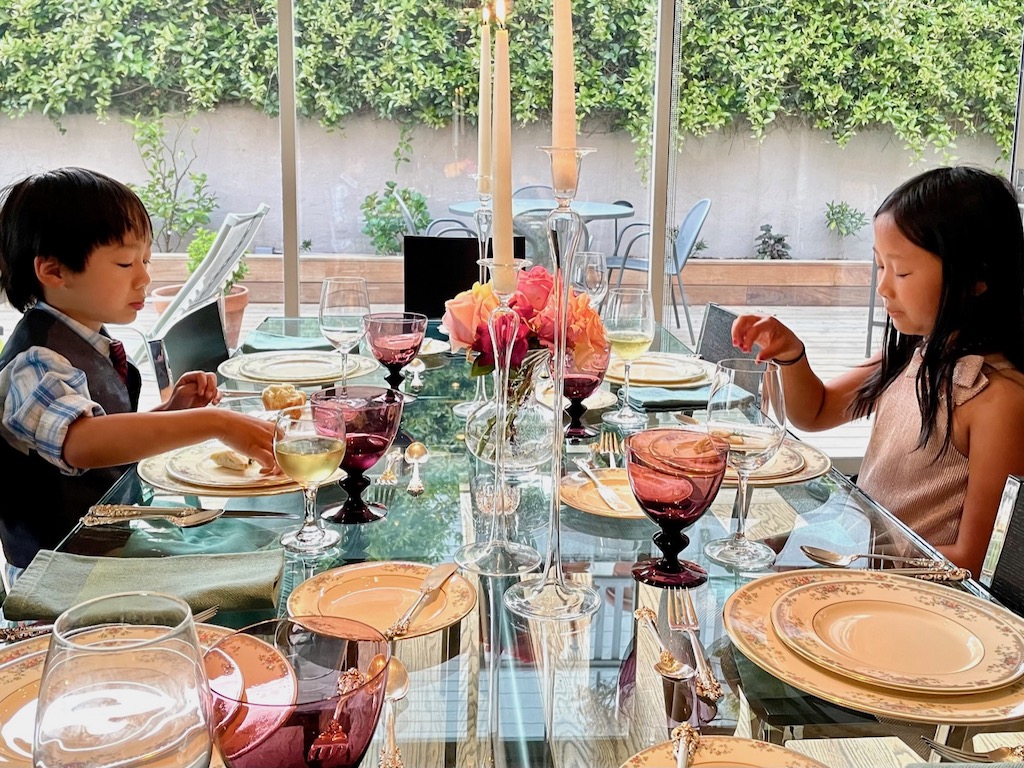
I realize dining is casual today, and the children will rarely need more than the basics: chew with your mouth closed, wash your hands, and so forth. Still, it’s good to be exposed to a more formal dinner environment.
I had no illusion that the kids would retain all they learned. Also, I’m no Emily Post. The goal was merely to make my grandchildren aware that there is such a thing as proper dining etiquette–even for kids.
If they forgot what to do after our lesson, there would be other opportunities to relearn. The point was to make it a fun evening of education and to keep the kids entertained and engaged.
Dining Etiquette for Kids: The Set Up
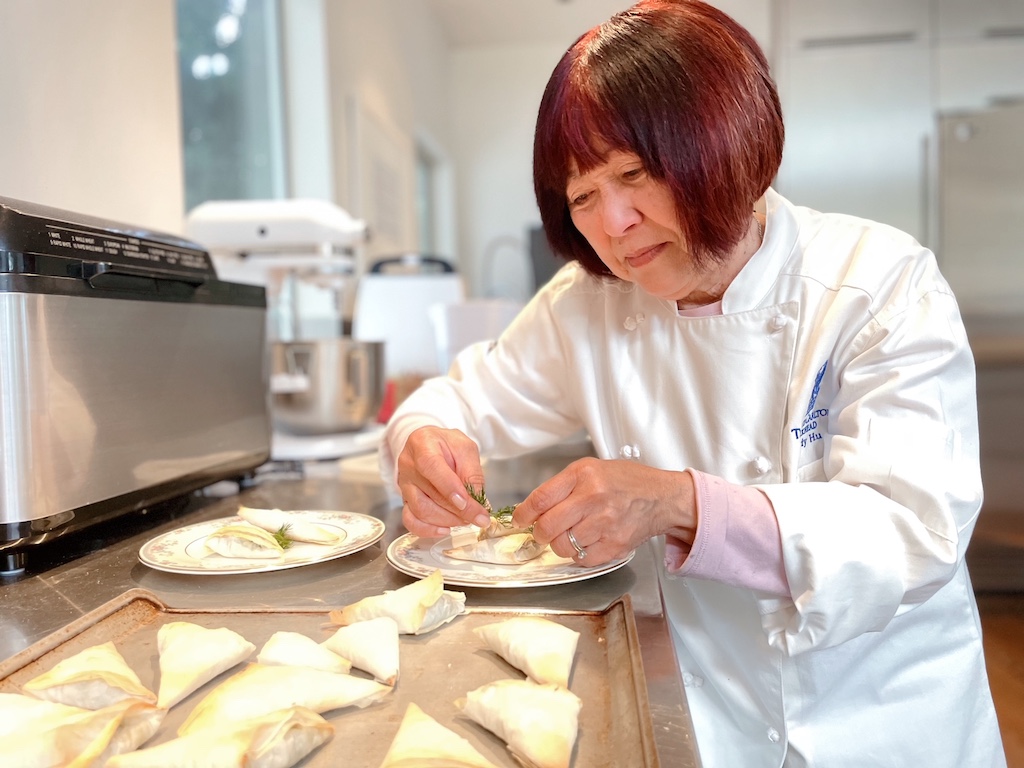
As requested, the children arrived in their party outfits. The parents decided to dress their part as waitstaff, in white shirts with black aprons. I was a pretend chef in my chef’s jacket, a gift years ago from the tony Ritz Carlton (that’s another story).
Setting the Table
The table setting was instructive, in and of itself.
Place Setting: I set a place on either side of each child so they would learn which bread plate and drink glasses were theirs in a group dining setting. Actually, they know the rudimentary rules of table setting, because they are called upon to set the table at grandma’s for our simple Friday night dinners.
Napkin: They learned to put their napkin on their lap and to keep it there throughout the meal. It’s something they usually forget to do.
Silverware: They learned to use the utensils starting from the outside, in.
Here’s a game to play where kids are the restaurateurs. They learn reading, math, organization, and people skills.
It’s not that the kids aren’t exposed to fine tableware or cloth napkins. I try to set a fancy table for every holiday occasion. However, we aren’t focused on the elegance of their table manners when we are dining convivially together.
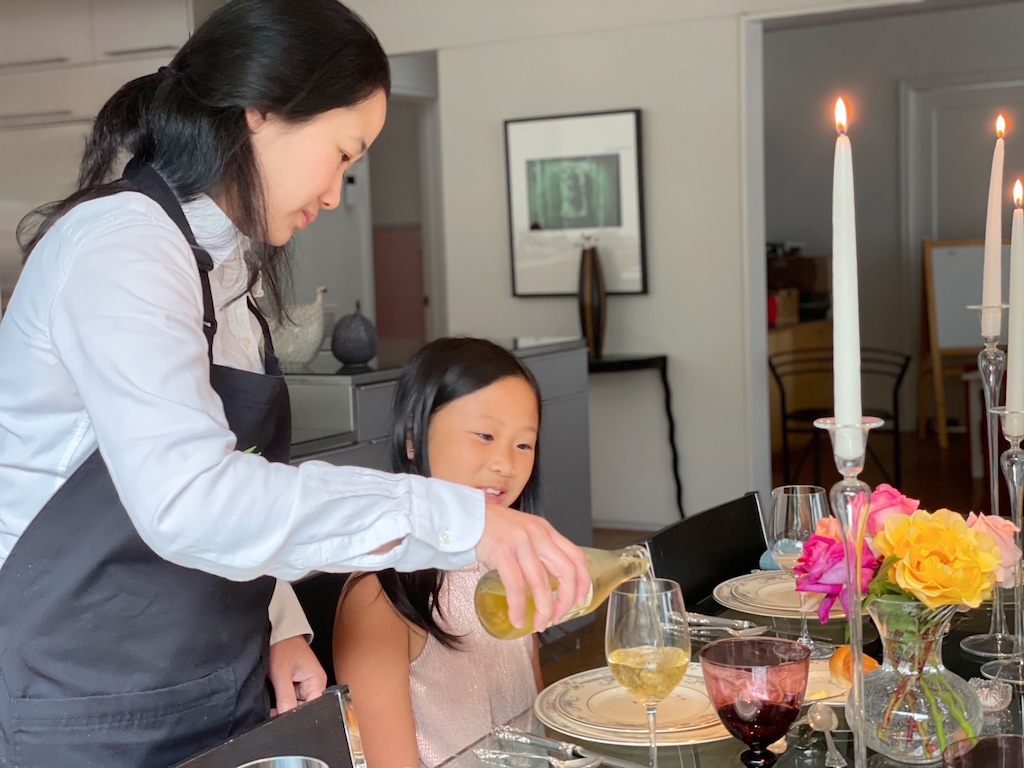
If your kids are rowdy or clumsy, you might want to rethink what kind of tableware to use. The same lessons can apply with everyday china and regular glassware. But part of the excitement for this activity is using all the fancy stuff–just for the kids.
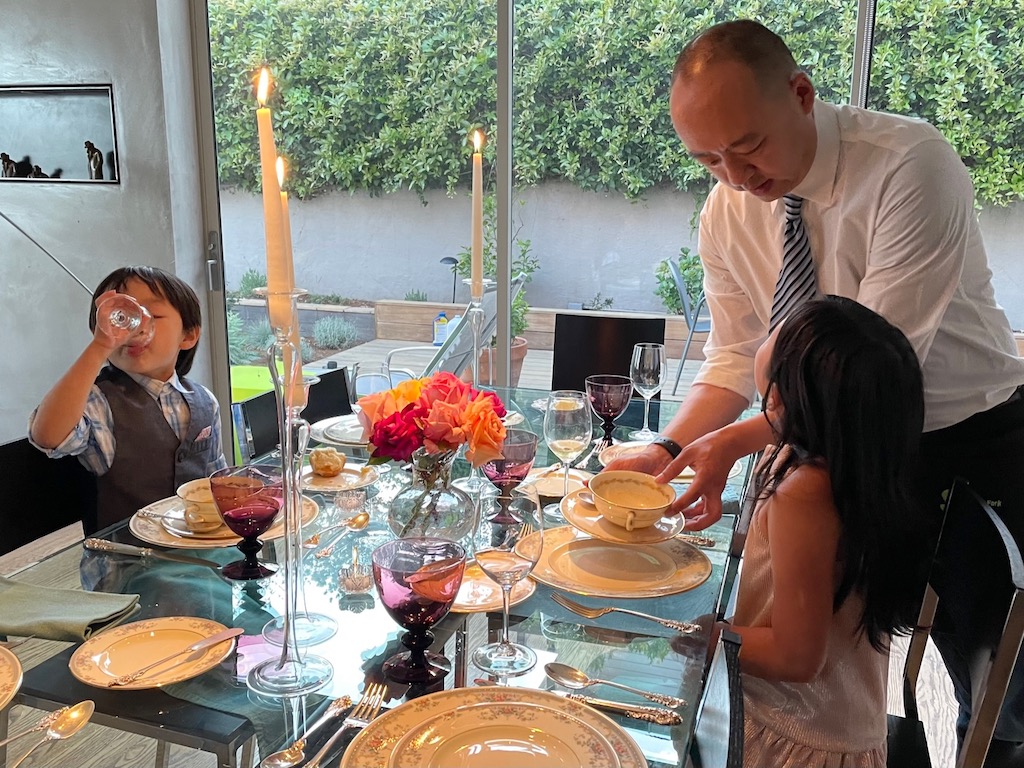
The Dinner Menu: Keep it Simple
This dinner wasn’t about the food, as it was about the way to eat it. I chose to serve dinner rolls, soup, pasta, and tender chicken that kids can cut with a knife and fork. Each menu item was meant to teach a specific lesson.
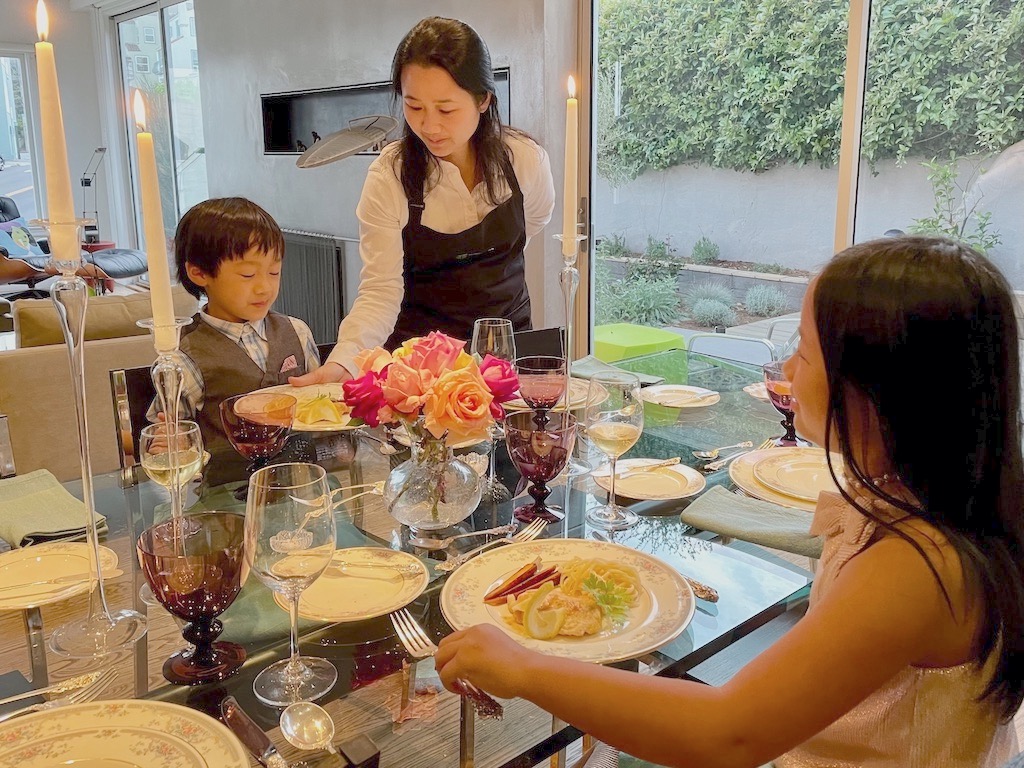
I also chose dishes that would be easy to prepare or that could be made ahead. And I stuck to simple flavors–no chopped herbs, for example, because they’re hard for kids to pick out (and they will).
- Rolls–to learn how to take butter from a butter dish and how to butter a roll
- Cream of Carrot Soup–to identify a soup spoon and practice sipping soup
- Chicken Scallopine, garlic pasta, and buttered baby carrots–to practice knife and fork skills cutting the chicken; to practice twirling pasta on a fork
- Strawberries in Phyllo–to learn to locate your dessert utensils; to practice using a fork and spoon to cut an unwieldy dessert (Since I don’t own dessert spoons we practiced with teaspoons)
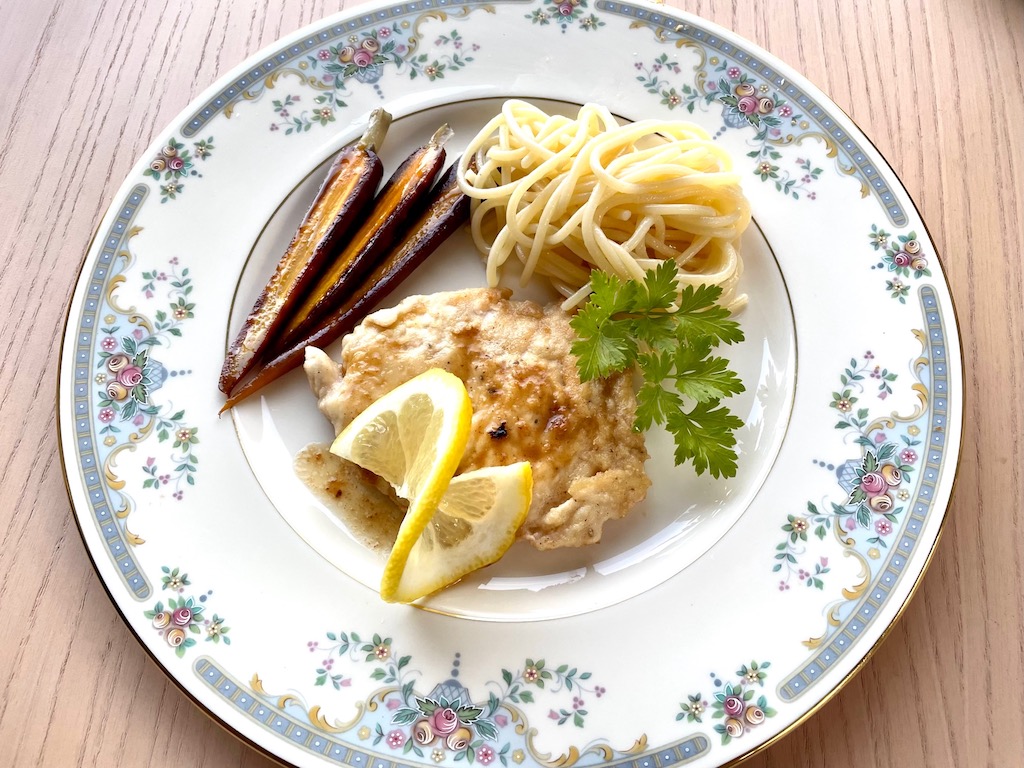
For more specifics about the menu see the bottom of this post.
How to Teach Kids Dining Etiquette
If you have someone to serve and someone to finish the cooking in the kitchen, you can stay with the kids as each course comes, and guide them through the meal.
For example, I passed the basket of rolls, then the butter dish and explained how to take some butter for their bread plate and how to butter a roll.
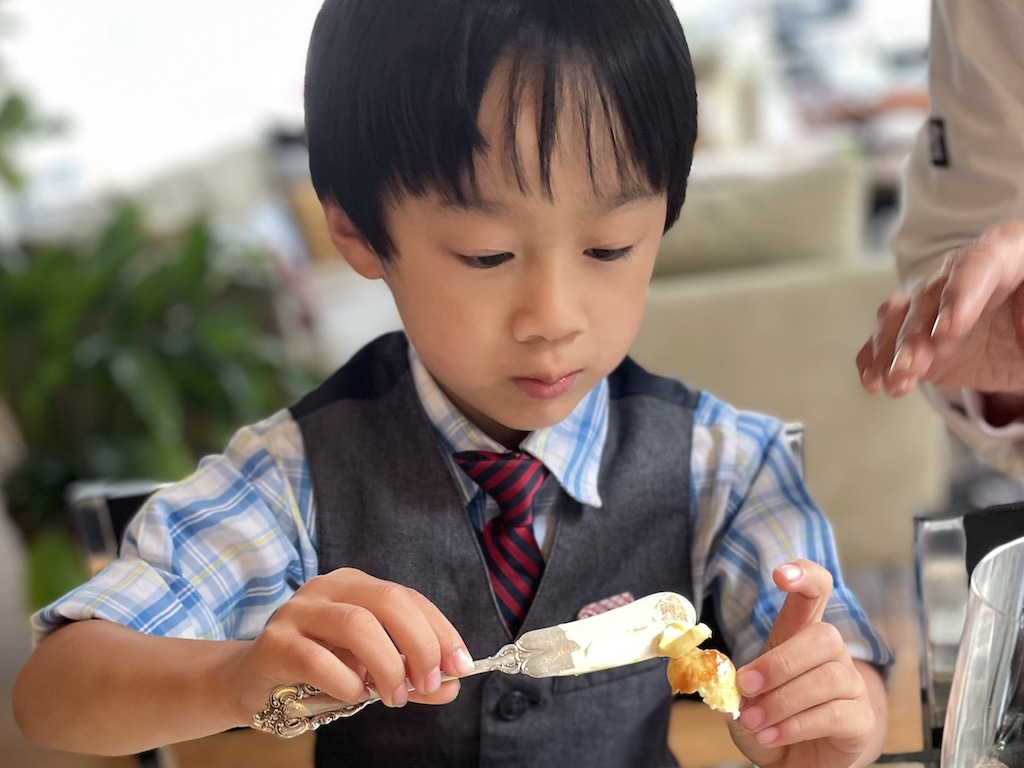
We worked through the meal together. Bread to soup, main course to dessert.
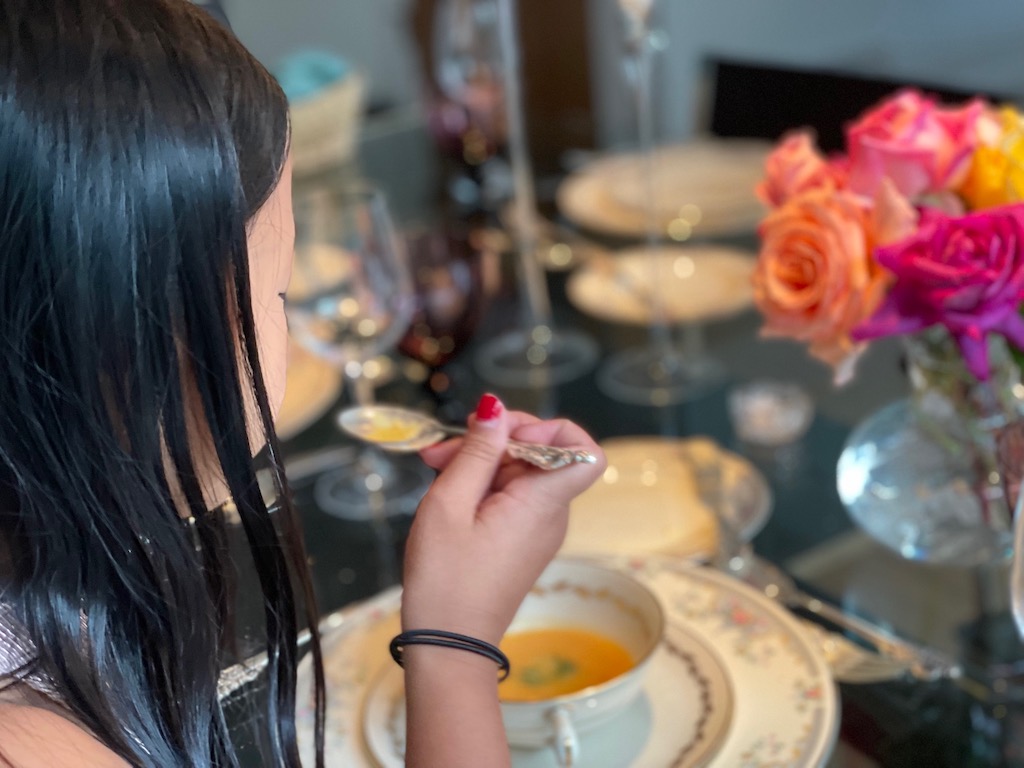
It Takes a Family
While originally, I had planned to prepare the meal by myself, along with grandpa’s invaluable support, it helped to have more hands on deck.
The kids’ dad, who was on the waitstaff team, also doubled as chef; he cooked the prepped chicken and made the sauce. Their mom reheated the carrots in butter. Grandpa made the garlic and oil pasta, and also served as the dishwasher.
While the kids were enjoying their meal in the dining area, the staff set down to their own dinner in the kitchen.

Keeping it Loose
Despite your own plans for the kids, you have to go with the flow, and do what works for the moment.
For example, after Little N successfully twirled the pasta on his fork a few times, he just wanted to eat it his way. So, why not? At this point, the lesson was taught, and he would know what to do when he wanted to be on his best behavior.
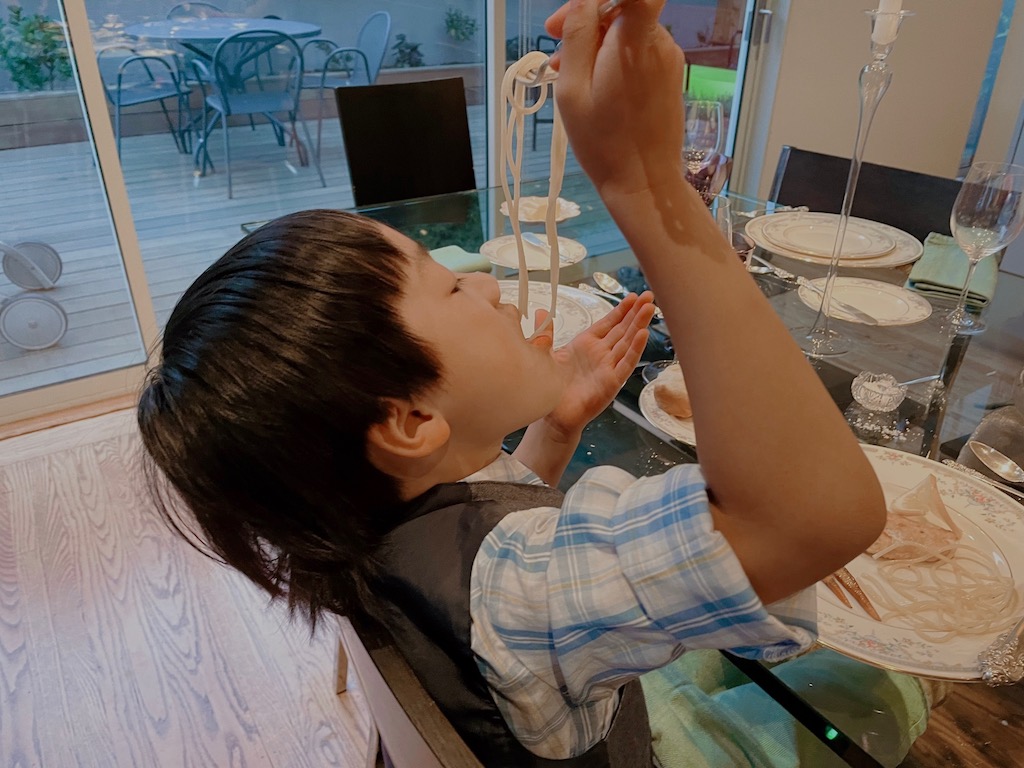
Another break from the “rules:” I had said that we don’t leave the table until everyone is finished and dinner is over. But Miss T was having seconds of the main course.
While he wasn’t complaining, it seemed like an awfully long time for a five-year-old to be sitting, waiting for his sister to be done–especially after having sat through a few other courses. So I excused Little N from the table. I sat in his place, to keep Miss T company. Then Little N returned for dessert.
Menu Details
Phyllo Triangles: This was merely an amuse-bouche–something to start the dinner and a way to use the leftover phyllo from the strawberry dessert. Stuffed with spinach and feta cheese, the recipe comes from Martha Stewart’s first book, Entertaining.
Rolls: Little N and I made cloverleaf rolls one day after school and froze them, to defrost for our dinner. I used the dough cycle of my breadmaker.
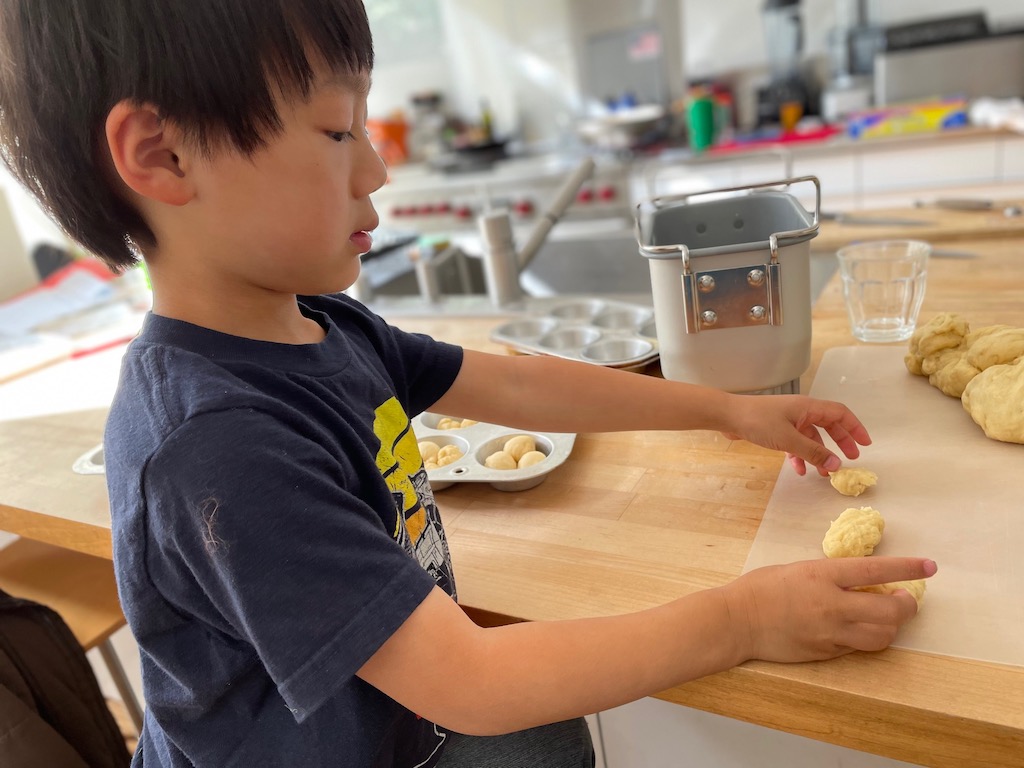
Cream of Carrot Soup: I sautéed some diced carrots, onion, and potato in olive oil, then added a can of chicken stock, simmering until the vegetables were soft. I puréed everything with a hand blender. Finally, off the heat, I stirred in a little cream.
Spaghetti in Garlic and Oil: Steve added finely minced garlic to extra-virgin olive oil and heated the mixture until warmed. He tossed it with hot cooked and drained spaghetti and seasoned with salt. Some chopped fresh herbs, such as parsley or basil, would have been nice, for color, but that would have been a turnoff for Little N.
Chicken Scallopine: I wanted to serve Make-Ahead Crispy Chicken Cutlets, an easy way to prep and freeze chicken cutlets, ready to bake and serve. I didn’t time to make this ahead, so I simply pounded the chicken breasts thinly, seasoned with salt and pepper, and set them aside. The children’s dad coated them with flour, then fried them in a mixture of butter and olive oil. To make a sauce, he removed the chicken, added lemon juice and chicken stock to the skillet, scraping up any browned bits, and swirled in some butter to finish.
Buttered Baby Carrots: I parboiled them ahead, then the children’s mom reheated the carrots in melted butter.
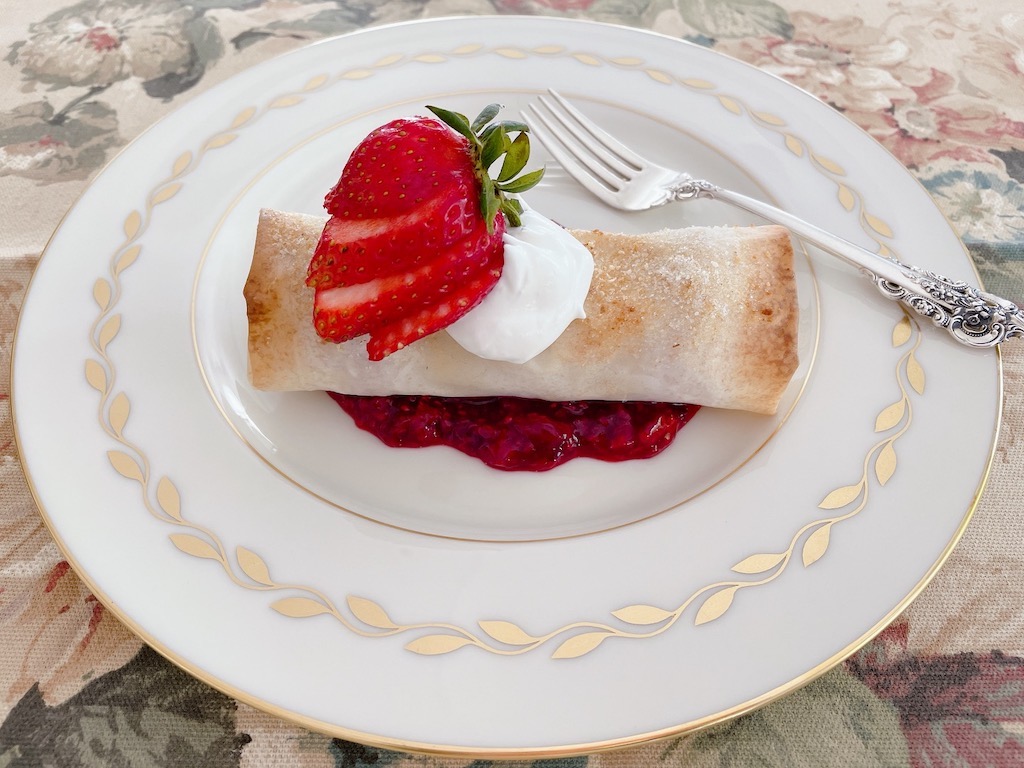
Strawberries in Phyllo: This dessert, featured in last week’s post, can be made in the morning; the sauce can be made a few days ahead. It’s simple to make if you’ve mastered working with phyllo.
Sign Up!
Don’t forget to sign up for my email newsletter. Every Wednesday, I’ll give you a new idea for an activity or insight to nurture the little ones in your life. Come visit!
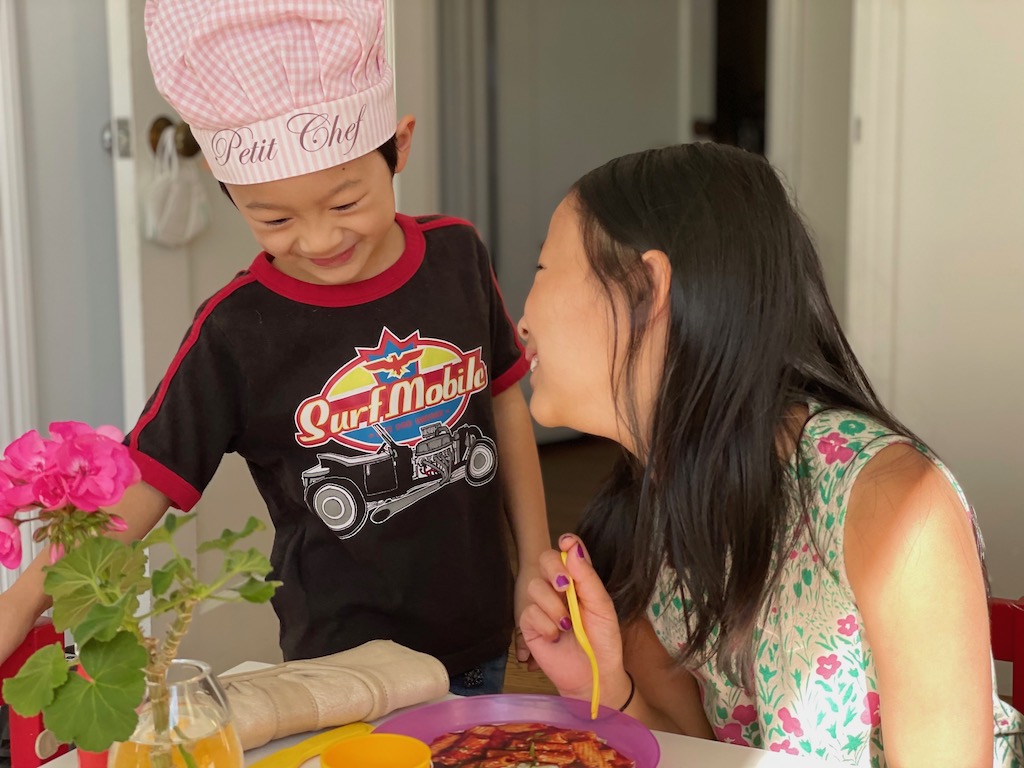
Just lovely!
Thank you!
I wish I could have attended this class! And eaten everything as well.
LOL. Thanks for your comment, Carol! Your’e welcome to join a dinner, any time. 🙂